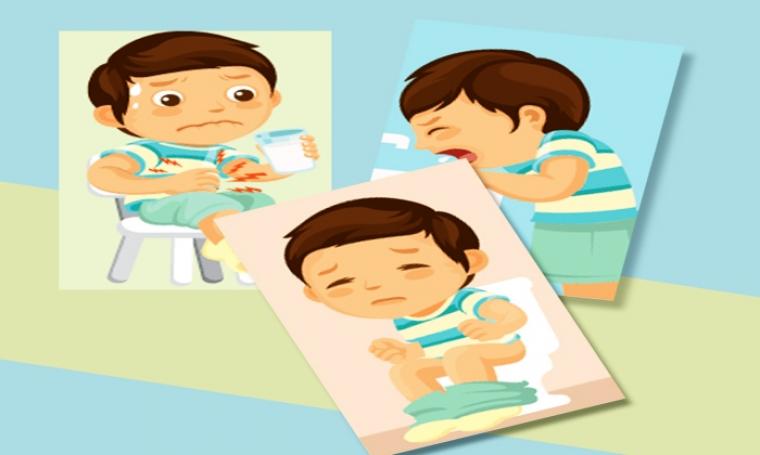Diarrhea is the second leading cause of death in children under five years (toddlers) with a mortality rate of 525,000 children each year. Viruses originating from the Norovirus genus are the second most common viruses after Rotavirus, which is the leading cause of acute diarrhea in children. Norovirus causes 218,000 deaths, and 1.1 million children are hospitalized annually worldwide, Norovirus is reported as 17-30% as a cause of severe diarrhea for children and in Indonesia.
Norovirus generally causes mild diarrhea with short episodes, but diarrhea due to this virus can be fatal if it occurs in children, geriatrics, and immunocompromised patients. Children with acute diarrhea caused by Norovirus show more severe diarrhea compared to children without Norovirus infection. The type of strain and Norovirus genotype is thought to be related to the severity of diarrhea, so early identification is essential to be done as a predictor of disease progression and management to be given. Noroviruses are classified into five different genotype groups, and the most common genotypes in Indonesia are GII.2 (71.4%) and GII.17 (14.3%).
This research was conducted in children aged 1-60 months with acute diarrhea treated at Dr. Soetomo Surabaya in April 2012 – March 2013 to find out the clinical profile of Norovirus infection in children. Children with congenital gastrointestinal abnormalities (Hirschprung’s disease), severe infections (sepsis, central nervous system infections (CNS) and bronchopneumonia), malabsorption abnormalities (cow’s milk protein allergy) and children with immunodeficiency were not included in this study to reduce bias. The severity of diarrhea is divided into 3 by using Vesikari Scoring System modification, namely mild diarrhea if score <7, moderate diarrhea if the score is 7-10, and severe diarrhea if score> 10. Modification of Vesikari Scoring System including seven clinical symptoms, namely the maximum frequency of diarrhea and vomiting in 24 hours, the duration of diarrhea and vomiting (days), body temperature, the degree of dehydration, and the therapy obtained.
A total of 94 samples were obtained from this study, with the highest distribution in boys and ages 6-23 months. Norovirus infection was detected in 31 (19%) samples with the most genotype was Norovirus GII (96.8%). Norovirus GII was found in 9 (30%) cases of severe diarrhea, 20 cases (66.7%) moderate diarrhea, and in cases of mild diarrhea in only 1 (3.3%) cases. In contrast, Norovirus GI was found in only 1 case with mild diarrhea.
Norovirus GII is the most genotype obtained in this study and is similar to a study conducted in Brazil, which also reported Norovirus GII as the most genotype is 96%. Another study conducted in China also found 97.6% of Norovirus GII infections, while GI was only obtained at 2.42%. Most (66.7%) severity of diarrhea in children infected with Norovirus GII in this study was moderate diarrhea, and as many as 30% were classified as severe diarrhea. A study conducted in Taiwan also showed results that Norovirus infection caused 30.6% mild diarrhea, 43.9% moderate diarrhea, and 25.5% severe diarrhea using Vesikari Scoring System.
Different results are reported from previous studies, which stated that Norovirus GII infection, especially Norovirus GII.4, GII.2, GII.3, GII.6, and GII.7 caused more severe clinical manifestations compared to other genotypes. However, it is still being debated whether the genotype itself or the amount of circulating virus (viral loads) is related to the severity of diarrhea until now.
Thus, it was found that 33% of cases of acute diarrhea in children aged 1-60 months caused by Norovirus infection dominated by Norovirus GII and as many as 30% of GII genotypes were found in severe acute diarrhea cases. The limited number of samples, the absence of data on other viruses that might be able to infect simultaneously as a cause of acute diarrhea and this study did not carry out gene sequencing or DNA sequencing, only classifying Norovirus genotypes based on RT-PCR are some of the limitations we found in this study, so further studies are still needed to overcome these limitations.
Author: Dr. Alpha Fardah Athiyyah, SpA (K)
Link:
https://pubmed.ncbi.nlm.nih.gov/32201573/?from_term=norovirus+surabaya&from_pos=2
Fardah Athiyyah A, Shigemura K, Kitagawa K, et al. Norovirus genogroup correlation with acute diarrhea severity in Indonesian pediatric patients aged 1-60 months: a cross-sectional study. F1000Res. 2019;8:2130. Published 2019 Dec 20. doi:10.12688/f1000research.21069.2





